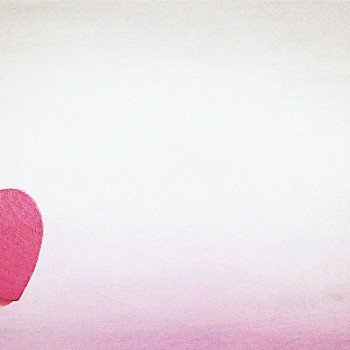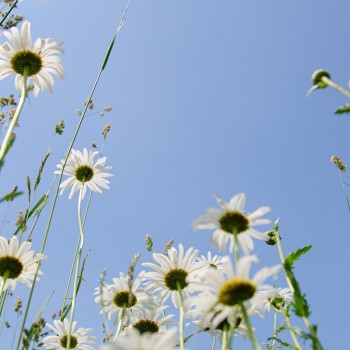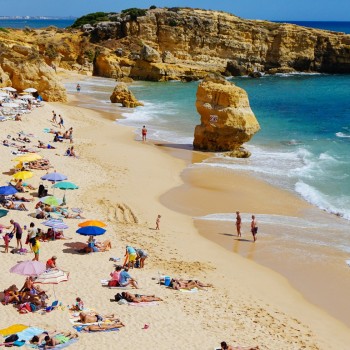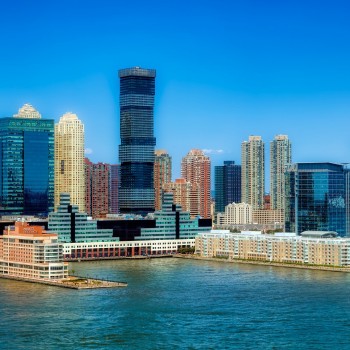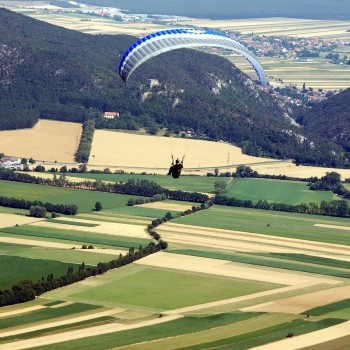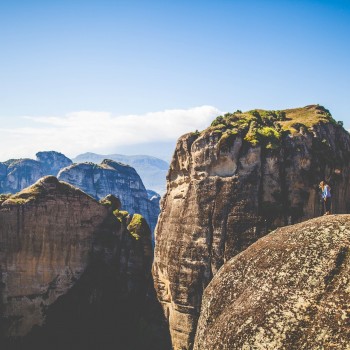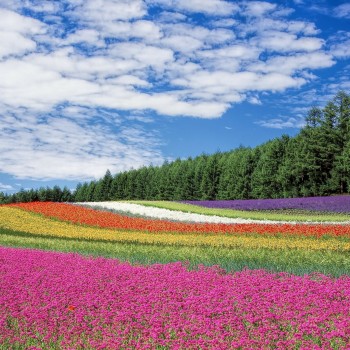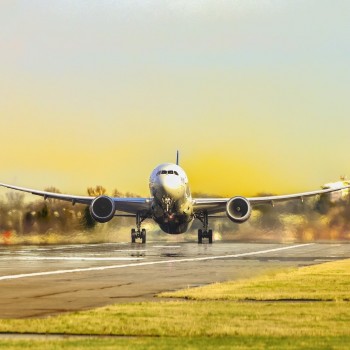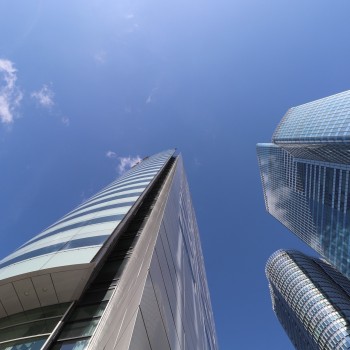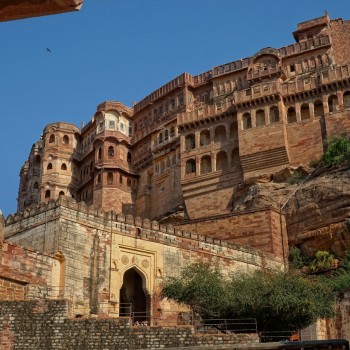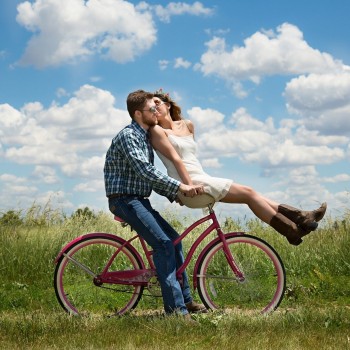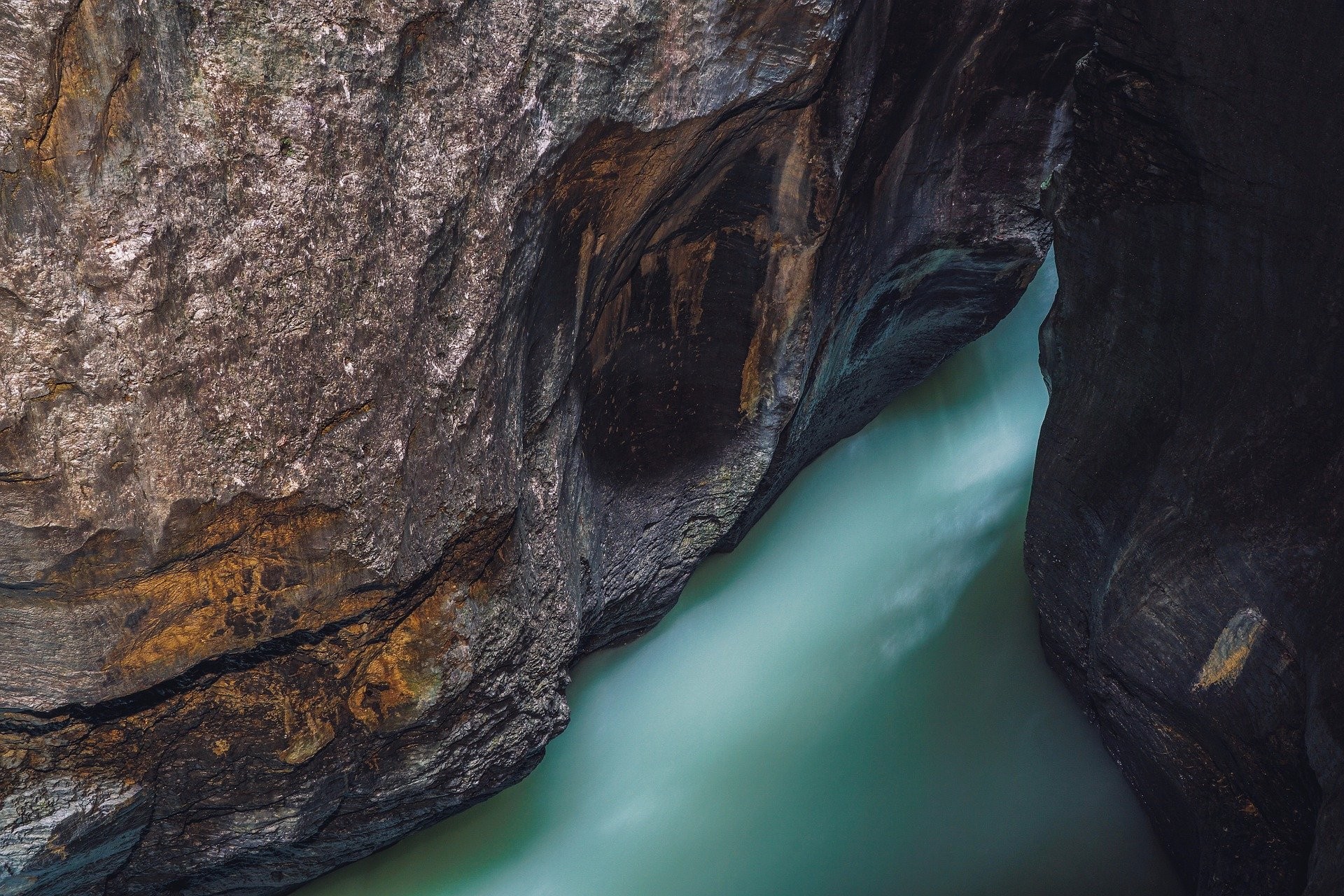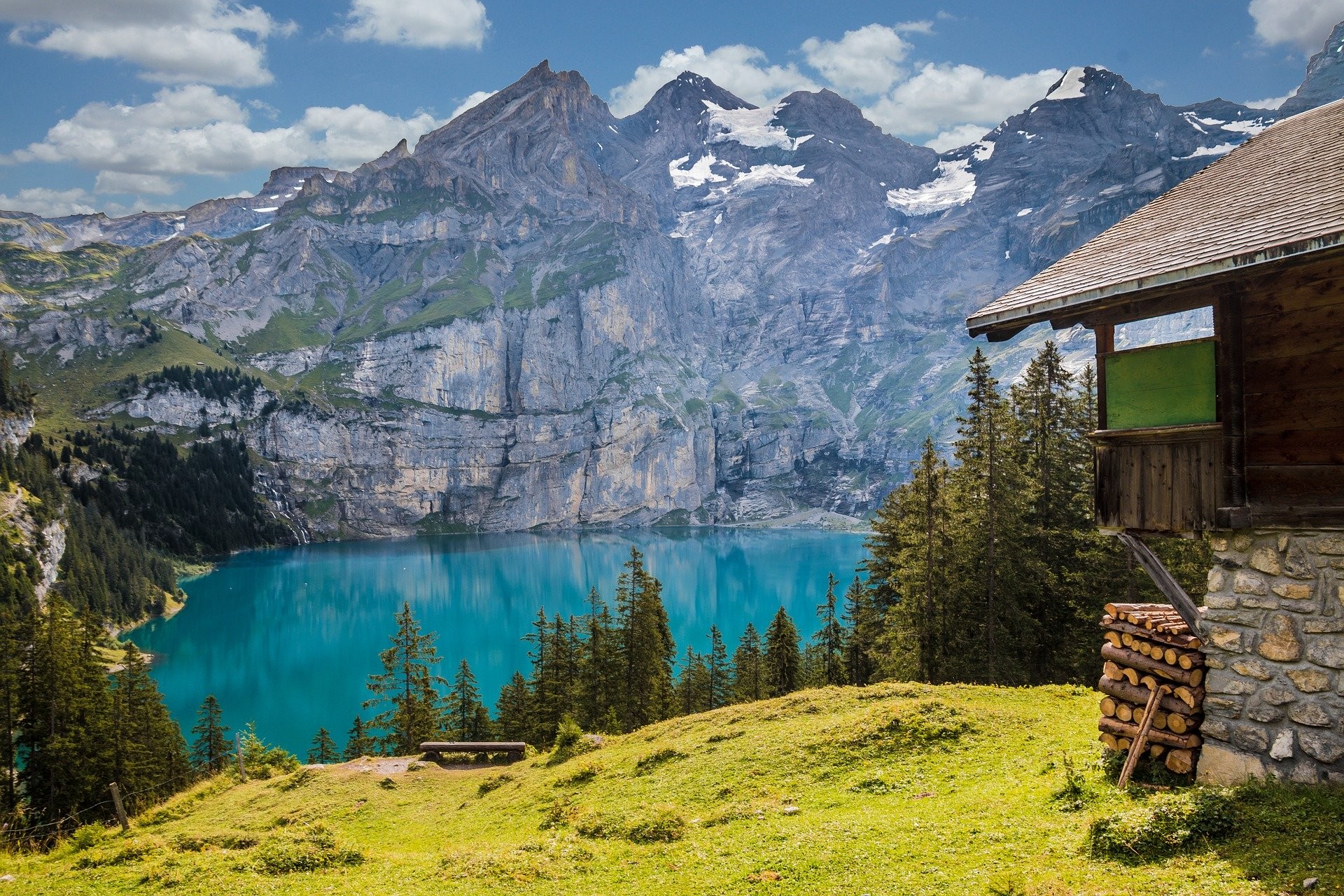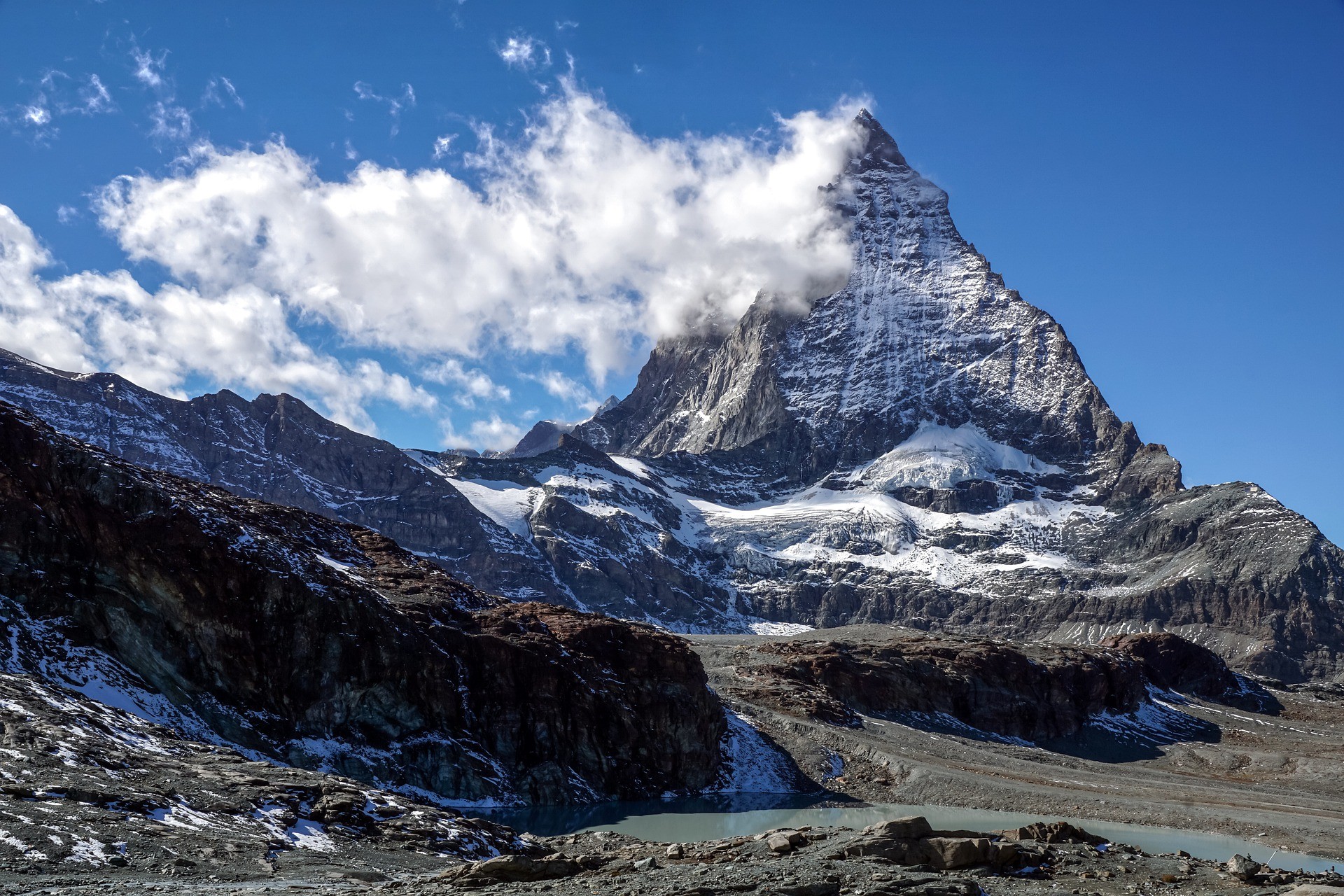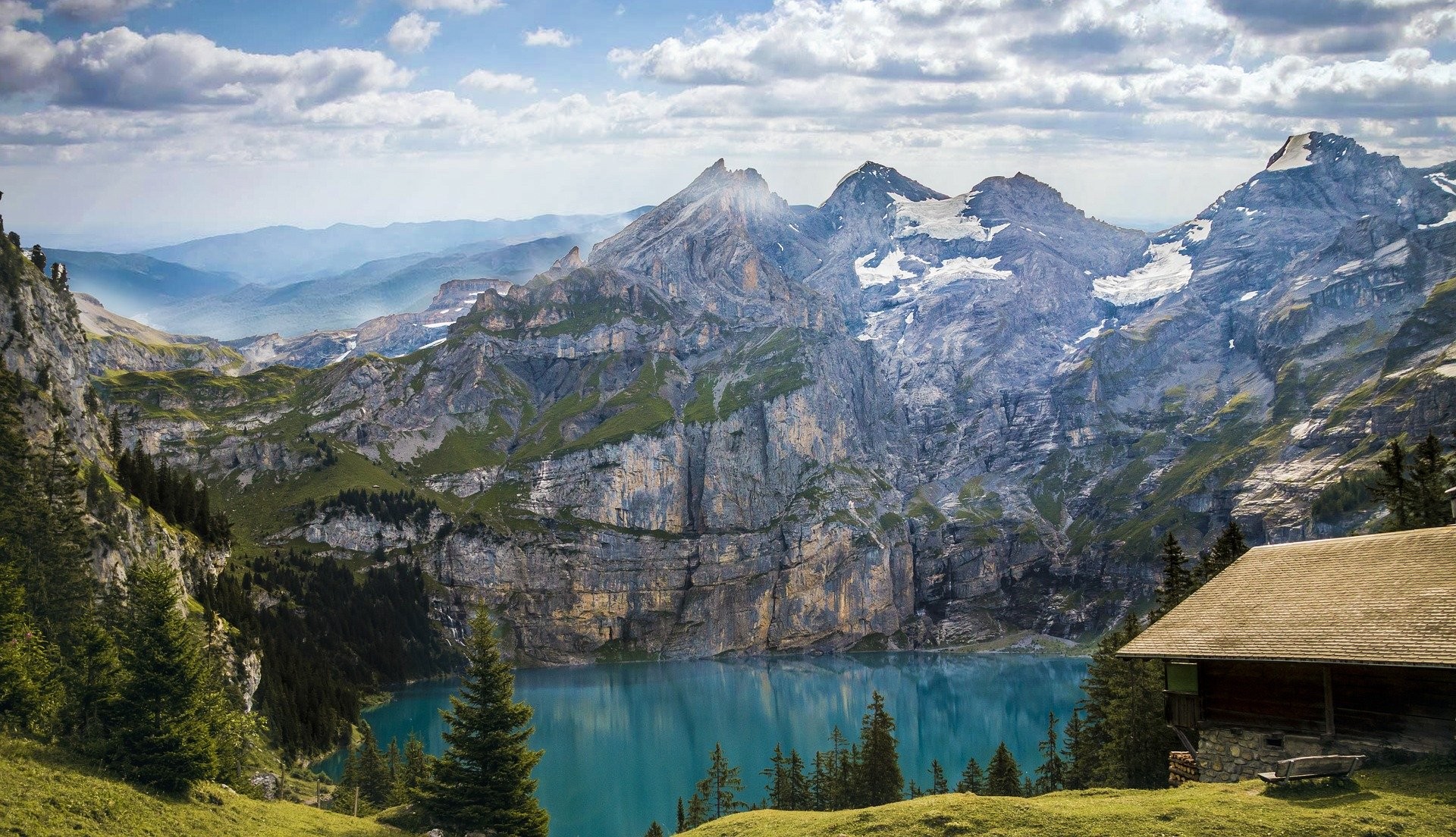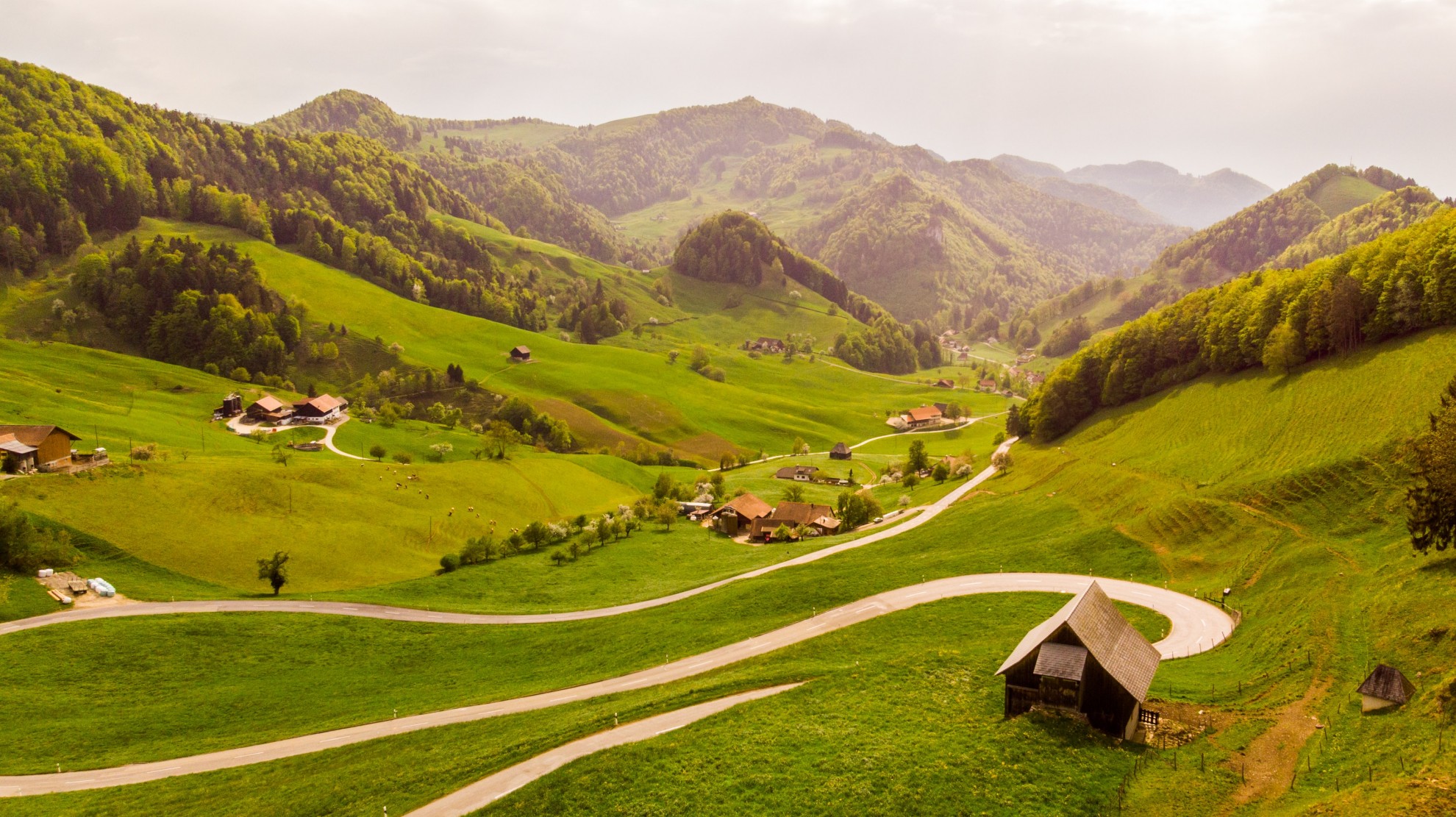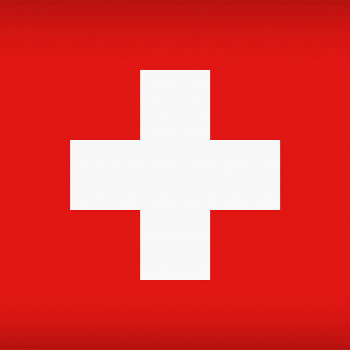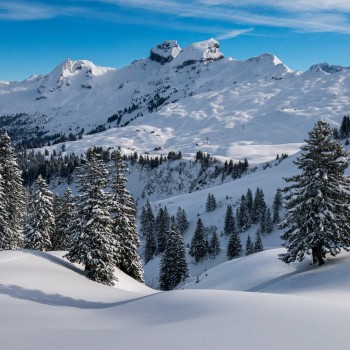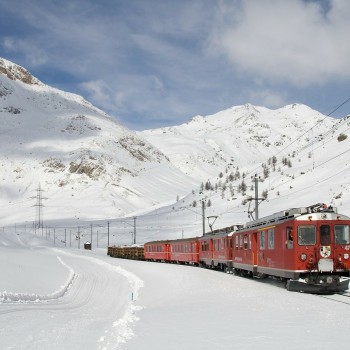Switzerland
Switzerland
Capital city description
Bern is the capital of Switzerland, the second largest canton in Switzerland, and the fourth largest city in Switzerland. The structure of Bern's city center is mainly medieval and has been recognized by UNESCO as a Cultural World Heritage Site.
Bern is home to 114 Swiss heritage sites of national significance. Some of the most notable in the Old Town include the Cathedral, which was started in 1421 and is the tallest Cathedral in Switzerland, the Zytglogge and Käfigturm towers, which mark two successive expansions of the Old Town, and the Holy Ghost Church, which is one of the largest Swiss Reformed churches in Switzerland. Within the Old Town, eleven 16th-century fountains, most attributed to Hans Gieng, are on the list.
Climate
Switzerland has a continental climate that varies by location and altitude. The temperate latitudes and the Alps chiefly influence the weather. Much of the Central Plateau has a humid continental climate (Köppen climate classification Dfb), a small area in the south-central region enjoys a humid subtropical climate (Köppen Cfa). The foothills of the Alps are subarctic (Köppen Dfc), with cool summers and cold winters.
Spring: March to May
Summer: June to August
Autumn: September to November
Winter: December to February
Languages spoken
Switzerland has four national and widely spoken languages: German, French, Italian, and Romansh. German is the official and most spoken language in the country and is commonly spoken in the country's central region. French is more predominant in the west near the French border, while Italian is more common in the south near the Italian border. Romansh is mainly spoken in the canton of Graubünden in southeast Switzerland.
Fun/Fascinating Facts
- Switzerland is home to the longest staircase globally; It has 11,674 steps, a total distance of 3.4 km from start to finish, and a vertical gain of a whopping 1669m.
- Switzerland houses 7000 stunning lakes! These wild waters of Switzerland are usually crystal clear and pristine enough to drink.
- Swiss consumption of chocolates per capita is the highest in the world. Also, Switzerland is one of the world’s great exporters of chocolate. They have invented techniques like conching and tempering to help them produce world-class chocolates.
- Switzerland is known for luxury watches. Half of the luxury watches produced in the world come from Switzerland. Brands like Tissot, TAG Heuer, Rolex, Patek Philippe, and Longines are all Swiss.
- Mountaineering, snowboarding, and skiing are famous sports in Switzerland.
Unique Customs/Traditions
- Schwingen is one of the national sporting traditions of Switzerland. Schwingen—which means “to swing” in German—most likely originated in medieval Switzerland; today, it is one of the most treasured Swiss customs. Two men wearing traditional belted leather shorts enter a sawdust-covered ring and wrestle until one has pinned the other to the ground.
- Playing a game of Hornussen is one of the most significant traditions in Switzerland. The game, a mixture of golf and baseball and originating from Swiss farmers, involves two teams and a Nouss. Teams launch the Nouss, a small disk, at the opposing team’s end of the field; the opponents must catch or at least hit the Nouss.https://www.expatica.com/ch/living/integration/switzerland-traditions-1162372/.
- Yearly in December, citizens of Geneva celebrate their victory against an attack led by the Duke of Savoy in 1602 with a rousing festival filled with food, drink, and period costumes on the weekend. Swiss children dress up and go door to door singing the anthem of Geneva. The kids then smash chocolate pots filled with sweets, a nod to the legendary Dame Royaume, who is said to have tipped a pot of hot vegetable soup on one of the attackers. https://www.expatica.com/ch/living/integration/switzerland-traditions-1162372/.
Popular universities
| Name | Description | |
|---|---|---|
| ETH Zurich, (Eidgenössische Technische Hochschule Zürich) | ETH Zurich, (Eidgenössische Technische Hochschule Zürich), is a public research university in the city of Zürich, Switzerland, founded in 1855. In English, the university, officially called the Swiss Federal Institute of Technology Zurich, has 16 departments that offer academic education and conduct scientific research in subjects ranging from engineering and architecture to chemistry and physics. | |
| École Polytechnique fédérale de Lausanne | École Polytechnique fédérale de Lausanne (EPFL), or the Swiss Federal Institute of Technology in Lausanne, is a public research university in Lausanne, Switzerland.École Polytechnique Fédérale de Lausanne (EPFL) offers courses and programs leading to officially recognized higher education degrees such as bachelor degrees, master's degrees, doctorate degrees in several areas of study. The EPFL campus lies on the shores of Lake Geneva and consists of 65 buildings across 136 acres. Facilities include banks, bars, two museums – the Musee Bolo and Archizoom – and bars, restaurants, and cafeterias. | |
| Université de Genève (University of Geneva) | Université de Genève (University of Geneva) is a non-profit public higher education institution located in the urban setting of the small city of Geneva, established in 1835. Université de Genève (UNIGE) offers courses and programs leading to officially recognized higher education degrees such as bachelor's degrees, master's degrees, doctorate degrees in several areas of study. | |
| Universität Zürich (University of Zurich) | Universität Zürich (University of Zurich) is a non-profit public higher education institution located in the urban setting of the medium city of Zürich, founded in 1833. , The university has seven faculties: Philosophy, Human Medicine, Economic Sciences, Law, Mathematics and Natural Sciences, Theology, and Veterinary Medicine. The most outstanding programs of UZH are Arts and Humanities, Engineering and Technology, Life Sciences and Medicine, Natural Science, Social Sciences and Management, Mathematics, Physics, Economics & Business. | |
| Universität Bern (University of Bern) | Universität Bern (University of Bern) is a non-profit public higher education institution located in the urban setting of the small city of Bern. It is a comprehensive university offering a broad choice of courses and programs in eight faculties. Universität Bern (UniBE) offers courses and programs leading to officially recognized higher education degrees such as bachelor's degrees, master's degrees, doctorate degrees in several areas of study. | |
| University of Lausanne | The University of Lausanne is a higher teaching and research institution composed of seven faculties: Faculty of Arts, Faculty of Biology and Medicine (FBM), Faculty of Business and Economics (HEC), also called HEC Lausanne, Faculty of Geosciences and Environment (GSE), Faculty of Law, Criminal Justice and Public Administration (FDSC), including the Swiss Graduate School of Public Administration Faculty of Social and Political Sciences (SSP), Faculty of Theology and Religious Studies (FTSR). Its research activities concentrate on three main themes: human and social sciences, life sciences and medicine, and environmental sciences. | |
| Universität Basel (University of Basel) | Universität Basel (University of Basel) is a non-profit public higher education institution located in the small city of Basel, Basel-Stadt, founded in 1460. Universität Basel (UNIBAS) offers courses and programs leading to officially recognized higher education degrees such as bachelor's degrees in several areas of study. | |
Festivals & Events

Paléo Festival
Date: July 19-24
Paléo Festival is the largest open-air rock festival, started in 1976 as a small two-stage folk festival. It shows over 250 in seven stages, hosting almost 230,000 visitors.
Paléo has opened up to all musical styles, as well as to circus and street arts.
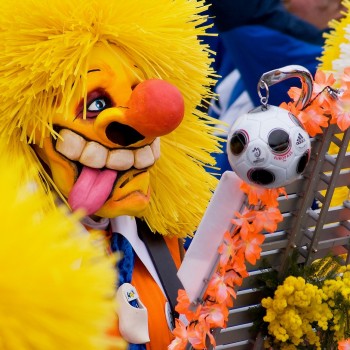
Basler Fasnacht
Date: March
In Basler, Basler Fasnacht is Switzerland's most prominent and famous carnival, celebrating locals' unique traditions. Local people in different costumes wearing a mask, traditionally known as a Larve, roam around the city.
The whole town is covered in confetti; simultaneously, the Fasnächtlers or the participants dominate the old town of central Basel, running free in the streets and restaurants. Since 2017, the Carnival of Basel has been included in UNESCO's intangible cultural heritage.
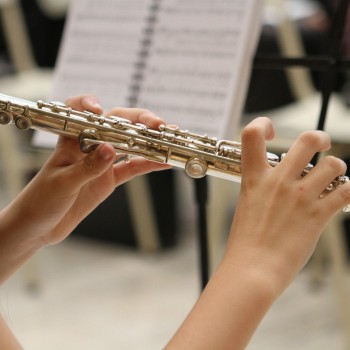
Montreux Jazz
Date: July 1-16
The biggest Jazz festival in Switzerland, the Montreux Jazz festival, is celebrated every year in Montreux in July. Many famous Jazz artists, as well as upcoming artists, perform at this Festival.
The Montreux Jazz Festival takes place for two weeks every summer in Switzerland, on the shores of Lake Geneva. About 250,000 spectators come to the Festival every year, enjoying a spectacular setting, concerts with renowned acoustics, and many free stages.
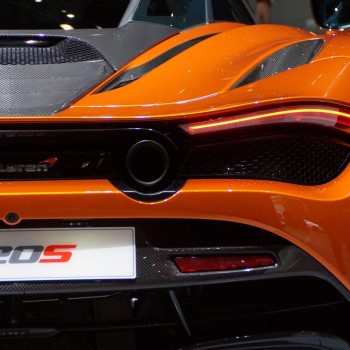
Geneva International Motor Show
Date: March (date varies)
The Geneva International Motor Show is an annual auto show held in March in the Swiss city of Geneva. Every year many well-known companies display their cars on this show for the first time before the whole world.
The show offers an exciting program that will allow you to discover the very heart of the motor industry and experience its innovations.

Festichoc
Date: April
The largest festival in Switzerland dedicated to chocolate, the Festichoc, organized by the City of Versoix, with a family and friendly character. The entrance is free and brings together more than 25 chocolate artisans from all over Switzerland.
Every year, nearly 40 chocolatiers — including big names such as Favarger — flock to Versoix for Festichoc. Free samplings are offered, including several chocolate fountains. Tastings, sales, an exhibition of chocolate sculptures, entertainment, and food stands will allow you to have a delicious.
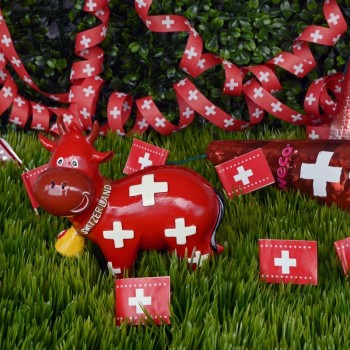
Fete Nationale Suisse Festival
Date: August 1
The Fete Nationale Suisse Festival is also the national holiday of Switzerland, and it is celebrated every August 1. The city is filled with paper lanterns, parades, bonfires, hanging strings of all the Swiss flags, and fireworks, making it an occasion that becomes one of the most significant and famous festivals attracting thousands of visitors.
Attractions / Top Sights
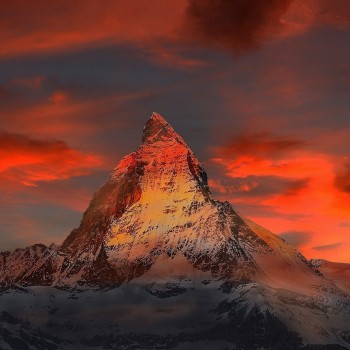
Matterhorn
When to visit: Late Autumn
The Matterhorn is one of the highest mountains in the Alps and one of the most picturesque mountains worldwide. The mountain peak rises to 4,478 meters, and its four steep faces lie in the direction of the compass points. Thousands of experienced climbers come here each summer.
At the foot of this mighty peak lies the fascinating village of Zermatt, a top international resort with horse-drawn carriage rides, quaint chalets, and world-class restaurants and hotels.

Jungfraujoch
When to visit: May to September
The Jungfraujoch is a glacier saddle on the upper snows of the Aletsch Glacier, the longest glacier in Europe, and is a UNESCO World Heritage Site. The famous Eiger Trail from the Eiger glacier station to Alpiglen clings to the rocks at the foot of the north face.
Other famous walks include the Panorama Way to the sunny, south-facing First slope; the Gletscherschlucht (Glacier Gorge); and Öpfelchüechliwäg, the high-altitude trail from Holenstein to Brandegg through fields of flowers, alpine pastures, and woodlands.
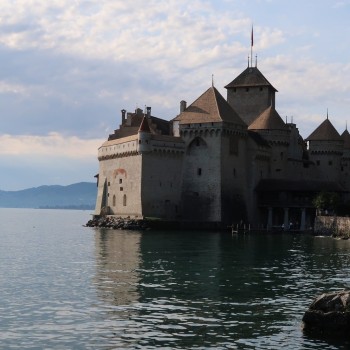
Chillon Castle
When to visit: May to September
Situated on the shores of Lake Geneva, Chillon Castle (Château de Chillon), the water castle was the main fortress that monitored water freight on the lake and guarded the land route to St Bernhard Pass.
The castle boasts art from the 14th century, subterranean vaults, 25 separate buildings with three courtyards, and two circular walls. Hundreds of thousands of guests each year tour the castle. The beautiful castle can be privately rented, perfect for wedding events and other important occasions.
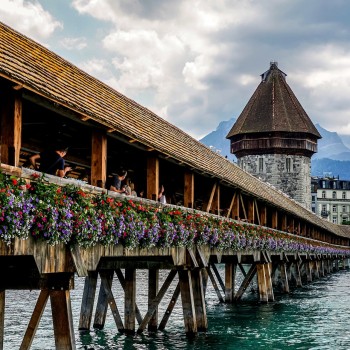
Chapel Bridge
When to visit: In summer
The Chapel Bridge is a 204 meter (670 foot) long bridge crossing the Reuss River in the city of Lucerne, built in the 14th century. The covered bridge, constructed in 1333, was designed to help protect the city of Lucerne from attacks.
The bridge is the oldest wooden covered bridge in Europe and one of the famous tourist attractions in Switzerland. Inside the bridge are beautiful collections of paintings from the 17th century depicting events from Luzerne’s history.
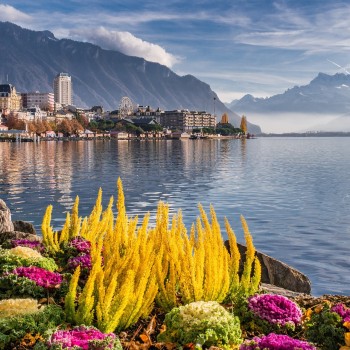
Lake Geneva
When to visit: July and August
One of the stunning lakes, Lake Geneva is the largest Alpine lake in Europe. Boardwalks, parks, and gardens surround the lake, and the old town is a lovely spot to stroll among the historic buildings. The Jet d'Eau, a fountain in Lake Geneva shooting water 150 meters into the air, is a famous landmark.
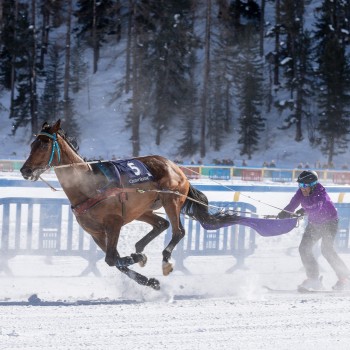
St. Moritz
When to visit: In spring
St. Moritz is a famous and stunning high Alpine resort town in the Engadine in Switzerland, at an elevation of about 1,800 meters (5,910 ft) above sea level. It is a perfect spot for winter sports such as skiing, snowboarding, skating, bobsledding, and many others.
The town is divided into two parts: St. Moritz Dorf sits on a sunny terrace overlooking the Lake of St. Moritz. The other part of town, lakeside St. Moritz Bad on the valley floor, is a health resort with less expensive lodging.
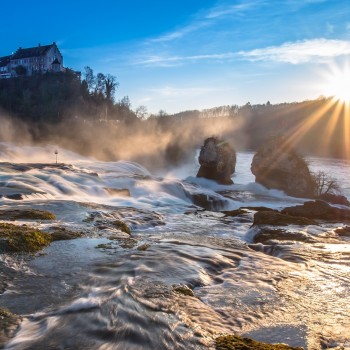
Rhine Falls
When to visit: In spring and summer
The largest waterfall close to Schaffhausen, the Rhine Falls, is breathtaking, spectacular beauty and the enormous plain waterfall in Europe. The falls are located on the High Rhine at Neuhausen am Rheinfall Village and just below Schaffhausen in the north of Switzerland. The Rhine's waters flow at 23 meters over a breadth of 150 meters. The tub's deepness is 13 meters, and the average torrential is 600 m per second.
The visitors are offered a stunning view of the cascading waterfalls. There are viewing platforms that reach out over the falls and allow guests to feel like they're hovering directly above. It also offers a children's playground adventure trail, making the visitor's center an excellent way to cap off the trip.
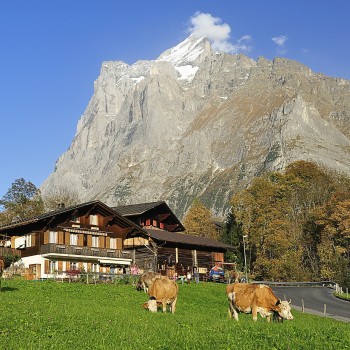
Grindelwald
When to visit: In spring and summer
The famous mountain town of Grindelwald is the most extensive ski resort town in the Jungfrau region embedded in a unique Alpine landscape at the foot of the Eiger north face.
This lovely alpine town is a summer and winter activity region that offers a wide range of exhilarating winter activities and sports.

